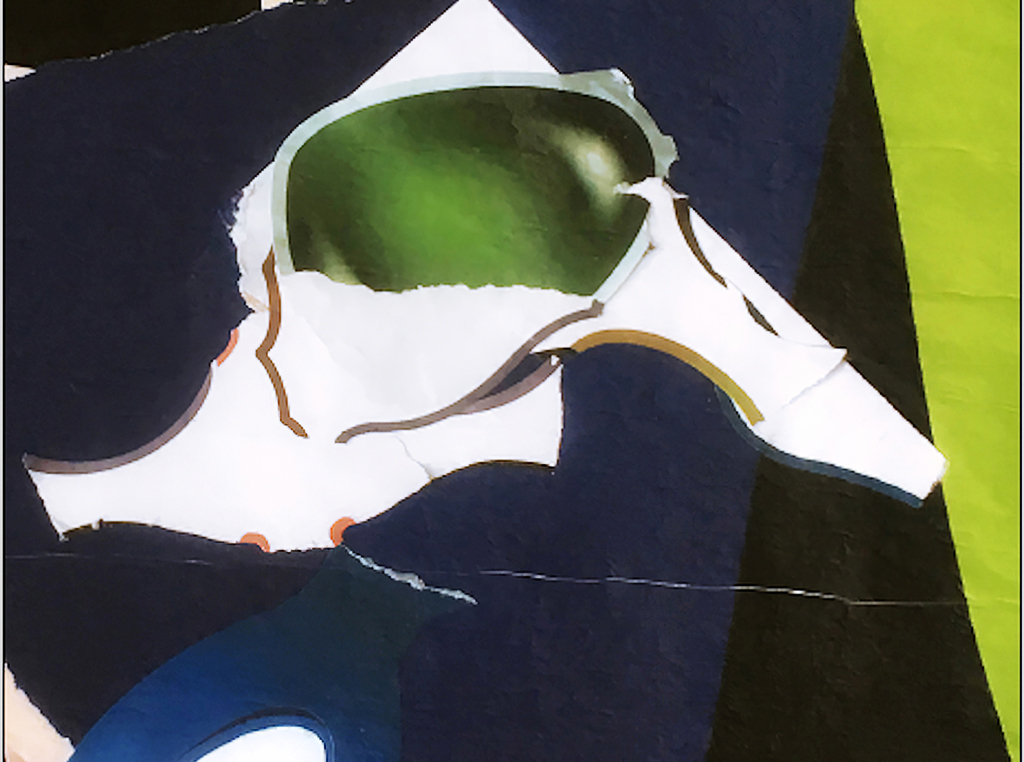ART CITIES:Geneva-Marina Faust
 Marina Faust’s oeuvre is anchored in self-portraits, which she has been doing since the start of her career. She places herself in the scene and simultaneously hides behind her materials, such as mohair wool or shaving foam. This symbolically reveals her approach of moving things closer to herself in order to then push them away again ? an oscillation between fascination and repulsion, identity and displacement.
Marina Faust’s oeuvre is anchored in self-portraits, which she has been doing since the start of her career. She places herself in the scene and simultaneously hides behind her materials, such as mohair wool or shaving foam. This symbolically reveals her approach of moving things closer to herself in order to then push them away again ? an oscillation between fascination and repulsion, identity and displacement.
By Dimitris Lempesis
Photo: Xippas Gallery Archive
Marina Faust’s collages in her solo exhibition “In Rare Cases, Local Hero with Pompadour” are portraits of women and men, an exhortation to produce “beings” without complying to conventional criteria of stereotypical beauty. Faust gives them a completely different treatment, tearing those portraits, not respecting the conventions of their completeness with facial elements to be stuck on, tearing again, altering the backgrounds, photographing the results and then tearing again, involving herself in as many operations as are necessary to keep the idea of a “perfect being” at bay. In his essay “The Face” Giorgio Agamben said that inasmuch “as it is nothing but pure communicability, every human face, even the most noble and beautiful, is already suspended on the edge of an abyss. This is precisely why the most delicate and graceful faces sometimes look as if they might suddenly decompose, thus letting the shapeless and bottomless background that threatens them emerge”. Marina Faust utilises the face as a starting point to enter questions about identity, the self, subjectivity, spirit, consciousness, agency, the other, personality, alienation, being, the subject, but instead of reading the narrative of culture written through faces, she uses means of abstractions and, more importantly, fragmented features as a locus of meaning. The fragments are not necessarily bound to a mode of temporality, so they equally speak of the present as much as they speak of a future. The fragmentary appears as ruptured within itself and is thereby apart from propositions, rules, narratives and systems. The fragment is characterised by its inherent multiplicity therefore Faust’s portraits can be seen as psychological MRTs, flaying and unpeeling layers, splinters, bringing them to the surface to be seen simultaneously. At the core of Marina Faust’s practice has always been photography – she has developed a radical and unusual approach to exhibition photography – and the photographic interpretation of the body in particular, evidently in her uninterrupted collaboration with Martin Margiela for some twenty years, but also in her publishing activity for various magazines, and also in her personal work which led her, notably, to do many portraits and also many self-portraits. It is in fact the body that links all these activities together. In 1995, Faust began working with other media, including collages, videos and objects. She taught at the École nationale supérieure des Beaux-Arts in 2000-2001. Her group of traveling chairs, first shown at Song Song, in Vienna in 2007, is part of the collection of Museum für angewandte Kunst Wien and is on display at the Contemporary Art Tower, Vienna. Her photo series are regularly published in French art magazine Frog. In October 2012, her collaboration with Franz West, “Talk without Words (Christopher Wool)”, was exhibited at Gagosian Gallery, London
Info: Xippas Gallery, Rue des Sablons 6, Geneva, Duration: 29/1-7/3/20, Days & Hours: Tue-Fri 10:00-12:30 & 14:00-18:30, Sat 12:00-17:00, https://www.xippas.com

